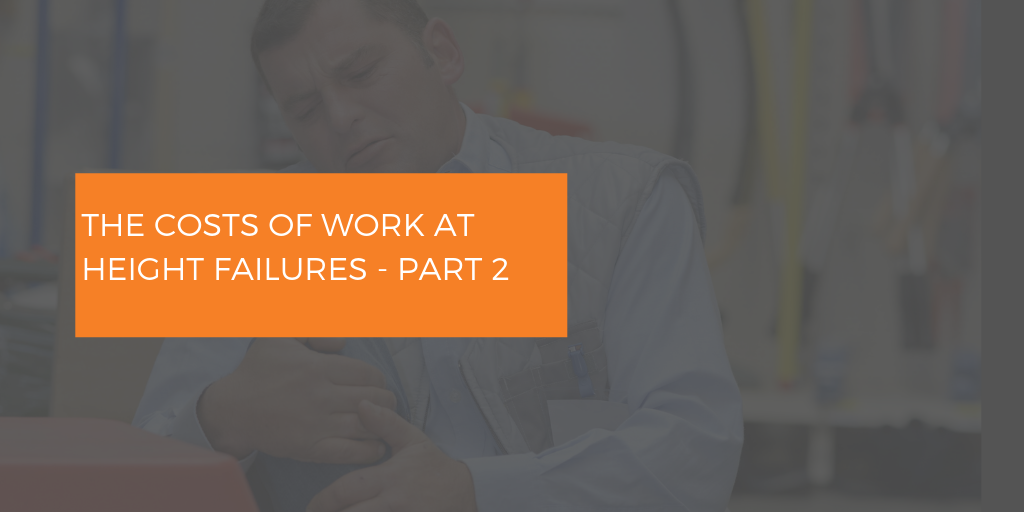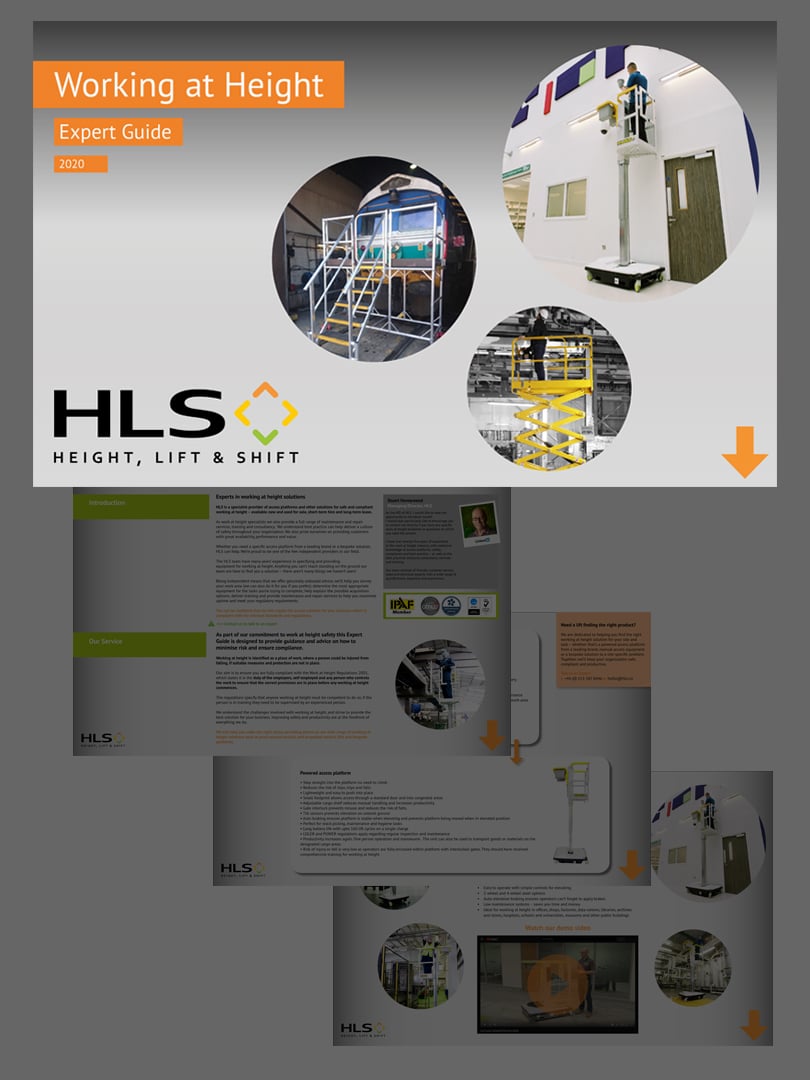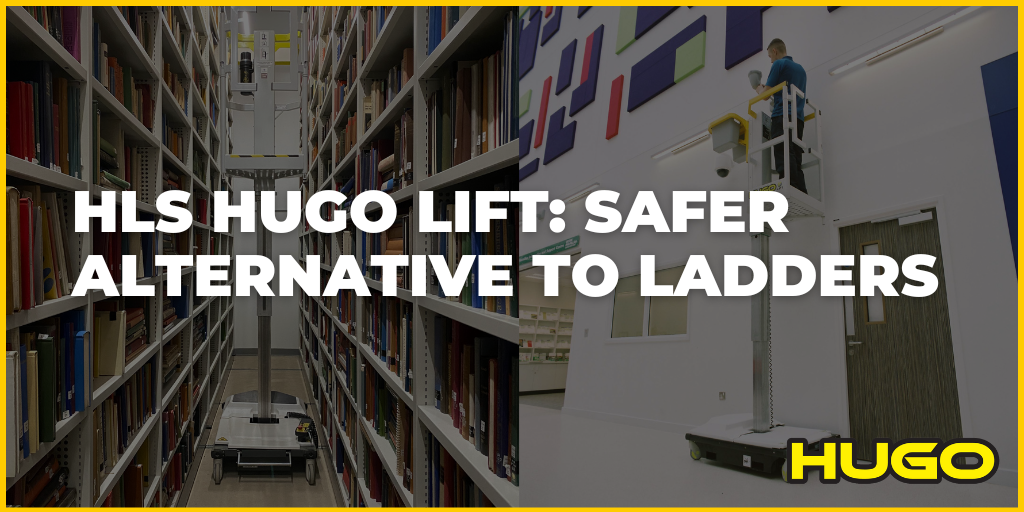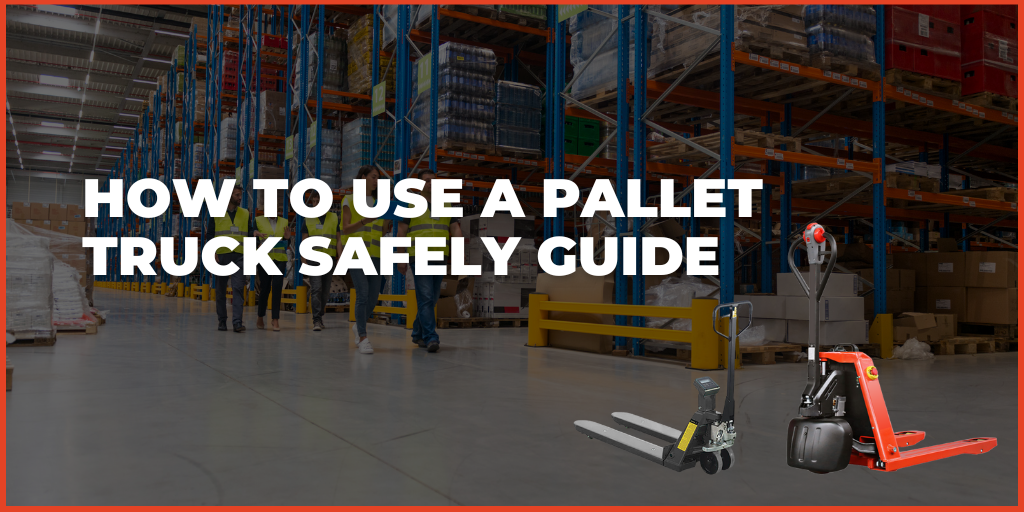In part 1 of this blog series, we focused on the financial costs associated with a serious work at height accident. Surprisingly, almost every industry experiences a high number of non-fatal injuries.
In 2017/18 there were estimated 555,000 non-fatal injuries which occurred at work according to self-reports into Labour Force Survey. The HSE says that this estimate is likely to be much higher due to a large volume of non-fatal accidents which go unreported.

The most common non-fatal injuries to employees were low level falls from height, handling, lifting or carrying goods, slips and trips. 44,400 of these are known to be falls from height, that’s 121 every day!

NON FATAL INJURIES - THE FINANCIAL COST TO EMPLOYERS
For employers, the ‘financial’ costs of injuries at work are significant. This is due to the extensive legal fees, recruitment costs, loss of production and sick days that accompany most workplace injuries.
The HSE found that 5.2 billion was paid out due to workplace injuries, equivalent to £1.6 million per fatal injury, £8,400 per non-fatal injury.
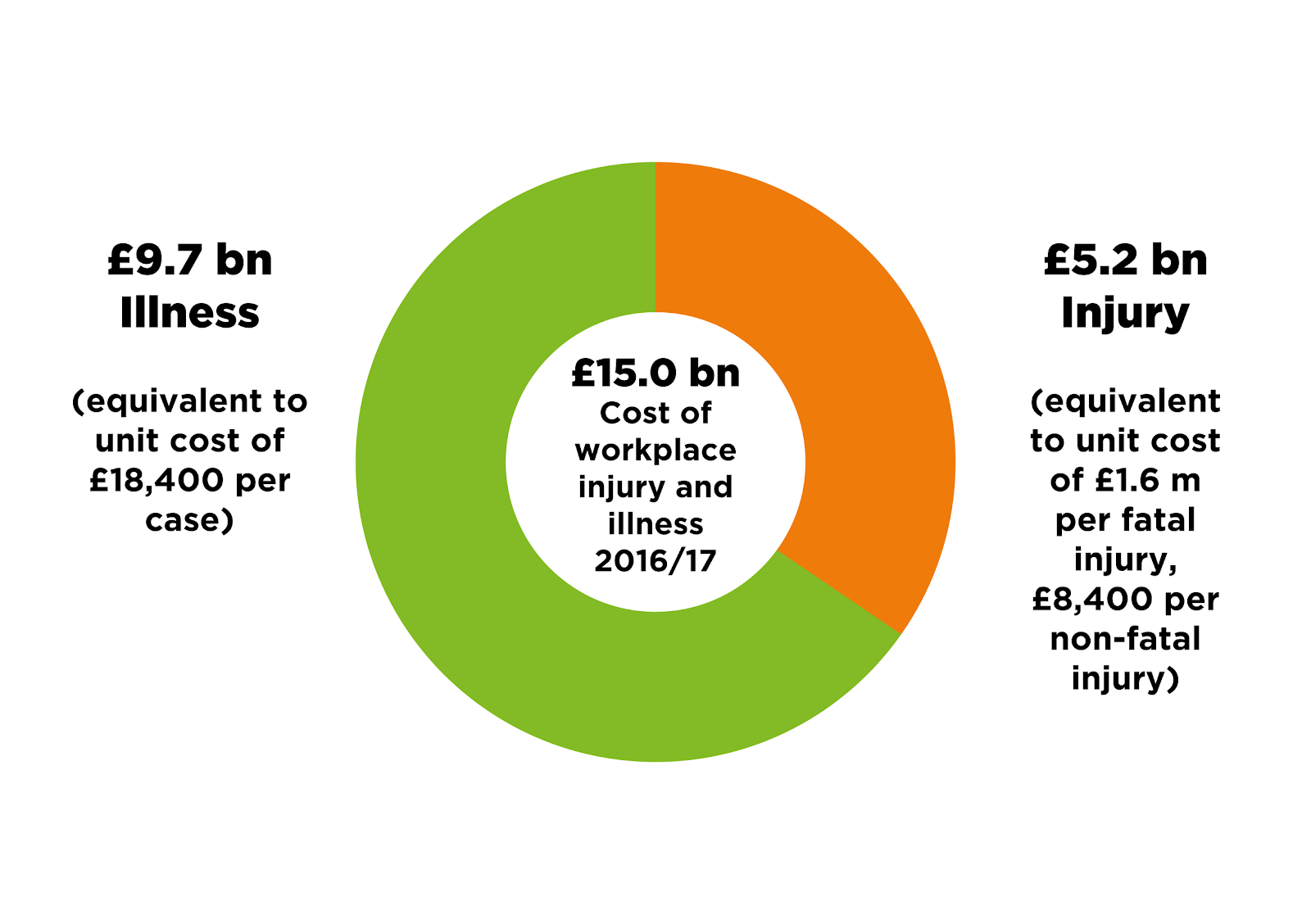
*Data from HSE - Costs to Britain of workplace fatalities and self-reported injuries and ill health, 2016/17. http://www.hse.gov.uk/statistics/causinj/index.htm
NON FATAL INJURIES - WORKING DAYS LOST
Non-fatal injuries resulted in a staggering 3.9 million days being taken off work for non-fatal injuries.
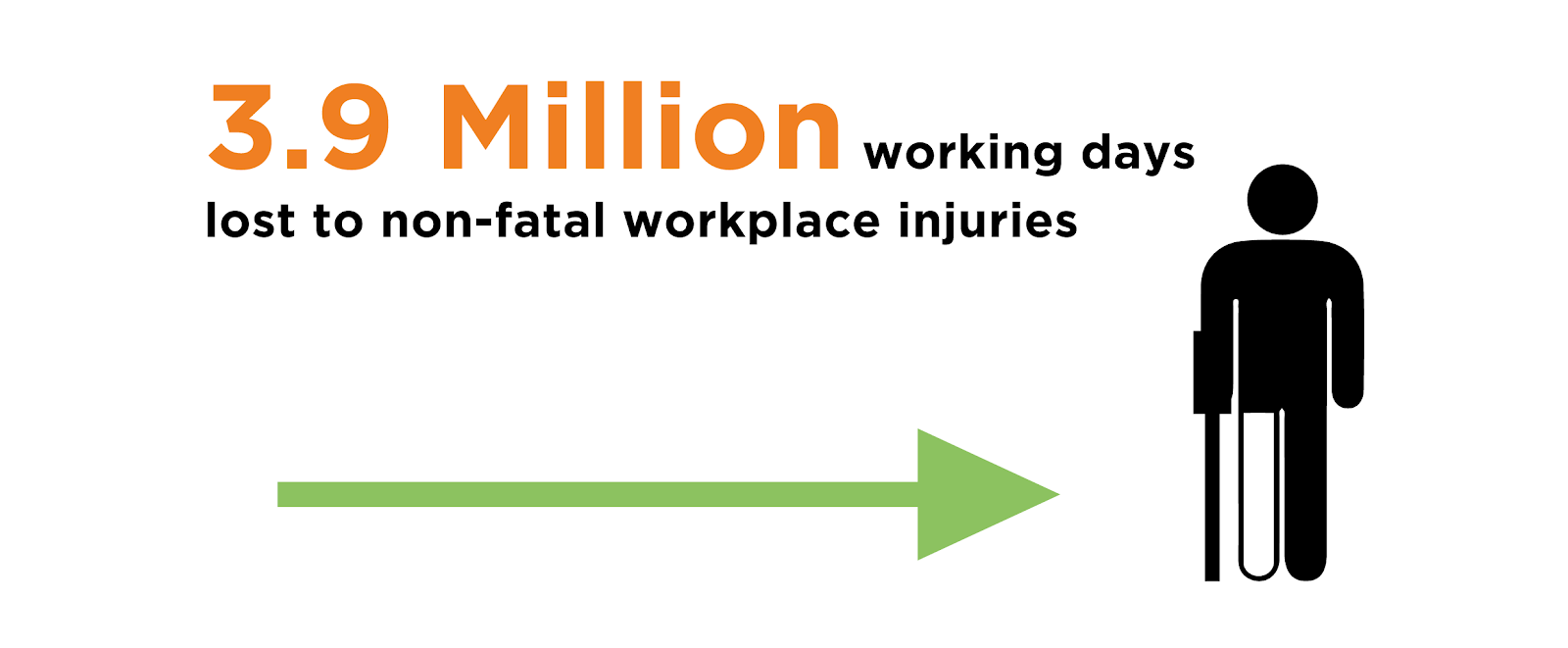
Most falls result in a broken bone and on average, each person suffering took around 9.1 days for injuries which can often be life-changing. For each of these days, productivity was reduced and in many cases revenue directly impacted.
Based on a 5-day working week, this is nearly 2 weeks’ productivity lost due to an occurrence, which probably could have been avoided.
As a result, employers incur the loss of income and loss of production directly related to lost working time. Other impacts such as human costs, healthcare costs, sick pay and damages add to increase the bill.
In some cases, the cost to employers is financial alone. However, depending on who is at fault and the size of a company, reputational damage can also be caused. This can have a significantly larger and longer-term impact on the organisation.
IN SUMMARY
To help reduce the £5.2 billion cost of workplace injuries, and the huge non-financial costs to those affected, employers must constantly be aware of the dangers their staff encounter.
The statistics demonstrate there’s still more work to be done to prevent both fatal and non-fatal falls from height in the workplace. Both employers and employees have the responsibility for ensuring safety when working at height. However, most companies are not working at height experts and may think that they have good control measures already in place. They may think 'well, we have never had a serious accident, so we must be doing something right'.
Don’t wait for an accident to happen before you review your working practices.
Without the correct equipment and proper procedures in place for monitoring and reporting incidents, it's hard to tell how good or bad your safety record is until an accident takes place.
Addressing work at height practices in your business should not be seen as a regulatory burden; on the contrary, it offers significant opportunities. It can reduce risks, resulting in employee absence and turnover being lower, fewer accidents and the threat of legal action is lessened - your costs are reduced and your workforce is more productive. You will gain improved standing among suppliers and partners, a better reputation for corporate responsibility among investors, customers and communities, as well as increased productivity.
Most importantly your employees will be healthier, happier and better motivated. And last but not least, never forget the biggest cost of poor work at height practice is that it could change someone’s life forever.
HLS provide a wide range of products and services for safe and efficient work at height. If you would like to find out more about working at height or you would simply like some expert advice, please do not hesitate to contact us at HLS.
Sources
The HSE:http://www.hse.gov.uk
Costs to Britain of workplace fatalities and self-reported injuries and ill health, 2016/17. http://www.hse.gov.uk/statistics/pdf/cost-to-britain.pdf
HSE Fatal Statistics: http://www.hse.gov.uk/statistics/fatals.htms
HSE Non Fatal Statisticshttp://www.hse.gov.uk/statistics/causinj/index.htm
Source: Labour Force Survey (non-fatal injuries) http://www.hse.gov.uk/statistics/lfs/technicalnote.htm
RIDDOR (fatal injuries)
http://www.hse.gov.uk/statistics/lfs/technicalnote.htm
